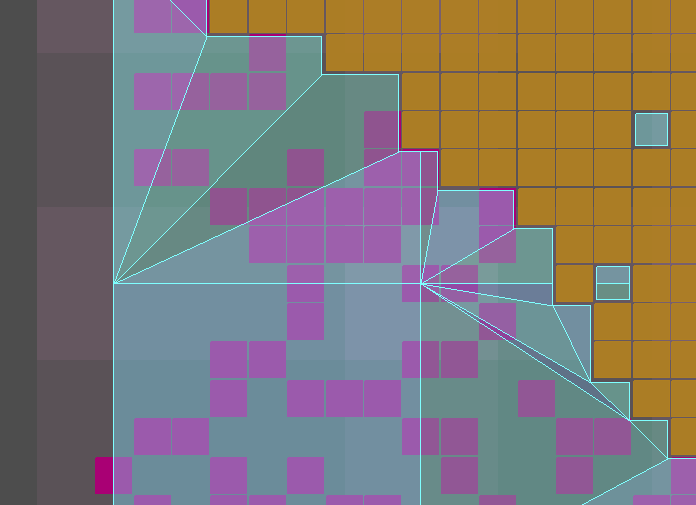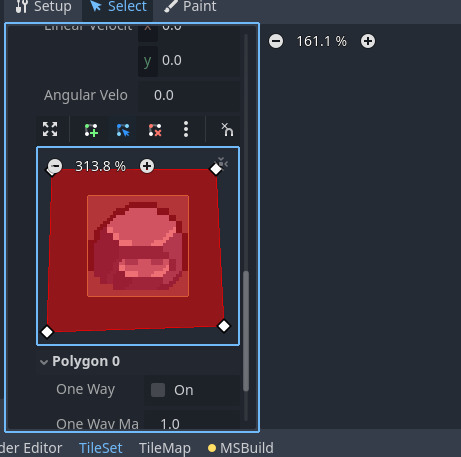Godot Version
v4.4.stable.mono.official.4c311cbee
Question
Hey all,
I had my navigation working perfectly with 64 pixel size tile maps, when I switched to 32 pixel size there is a massive spacing from the collision shapes.
64 pixel size nav regions:
32 pixel size nav regions with two different implementations of collisions (probably not relevant as the issue is the same either way):
You can see my nav region creation is related to the tile pixel size so logically would not be affected. I’ve tried modifying the border size, baking rect, and offset however they dont seem to have much if any effect. Previously it was very noticeable when the values changed.
var bakingBoundRectOffset = 2 * tilePixelSize;
var newNavigationPolygon = new NavigationPolygon();
newNavigationPolygon.AgentRadius = 5;
var bakingRect = new Rect2(new Vector2(globalOrigin.X - bakingBoundRectOffset, globalOrigin.Y - bakingBoundRectOffset),
horizontalSideLength + (2 * bakingBoundRectOffset),
verticalSideLength + (2 * bakingBoundRectOffset));
testrects.Add(bakingRect);
newNavigationPolygon.BakingRect = bakingRect;
newNavigationPolygon.BorderSize = 2 * tilePixelSize;
var sourceGeometry = new NavigationMeshSourceGeometryData2D();
var onParseDoneCallable = Callable.From(() => OnChunkSourceGeometryParsed(newNavigationPolygon, sourceGeometry));
NavigationServer2D.ParseSourceGeometryData(newNavigationPolygon, sourceGeometry, GetChildTileMapLayer(InternalMap.TileMapLayerType.Object), onParseDoneCallable);
Hopefully someone has a good idea, is it related to cell size? I’ve left the default 1.0 value as changing it either made the nav regions stay the same or disappear completely.
Thanks for your time!
Edit:
Further investigation has made me assume it has something to do with how the source geometry is parsed. My obstructions seem to have a 16 pixel offset on all sides causing this spacing:
Does anyone know how this could happen? The TileMapLayer has a tile size of 32x32 and my parse and bake code don’t make changes to much other than the polygon:
var sourceGeometry = new NavigationMeshSourceGeometryData2D();
var onParseDoneCallable = Callable.From(() => OnChunkSourceGeometryParsed(newNavigationPolygon, sourceGeometry));
NavigationServer2D.ParseSourceGeometryData(newNavigationPolygon, sourceGeometry, GetChildTileMapLayer(InternalMap.TileMapLayerType.Object), onParseDoneCallable);
private void OnChunkSourceGeometryParsed(NavigationPolygon polygon, NavigationMeshSourceGeometryData2D sourceGeometry){
var onBakeDoneCallable = Callable.From(() => OnChunkBakingDone(polygon));
NavigationServer2D.BakeFromSourceGeometryData(polygon, sourceGeometry, onBakeDoneCallable);
}
Edit 2: Not so much an offset but every obstruction is treated as 64x64 even when I change the tilemap layer tile size to anything, 16x16 even has 64x64 obstructions in the source geometry. I don’t see anything that could be setting this value, totally stuck now. @smix8 you know pretty much everything about the navigation; if you have a moment do you know why obstructions would be staying at 64x64 even when the TileMapLayer sent as source geometry is smaller?





